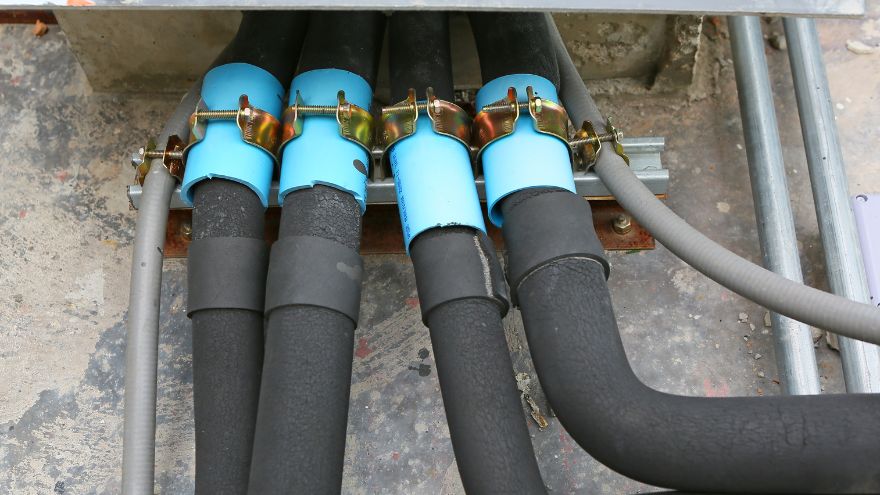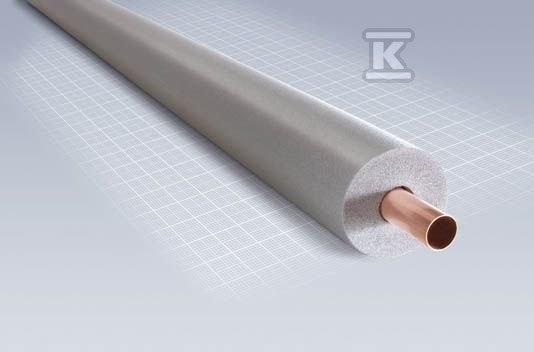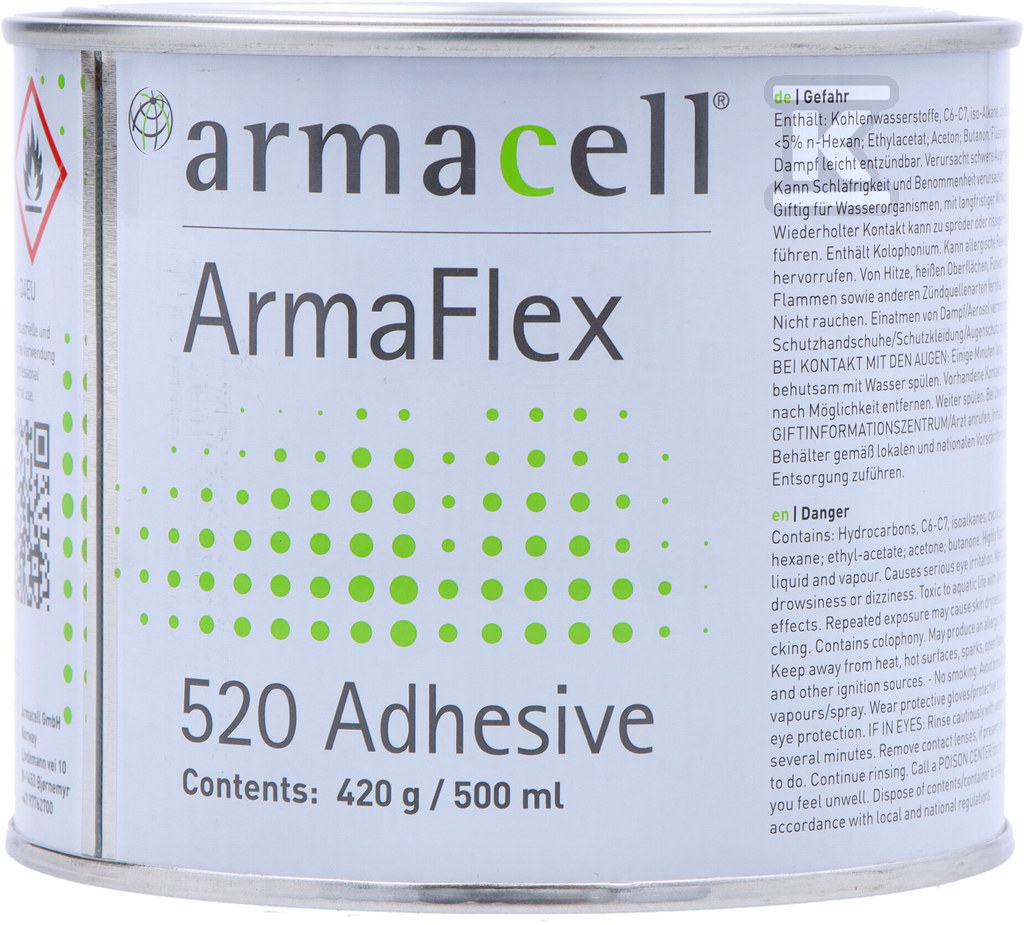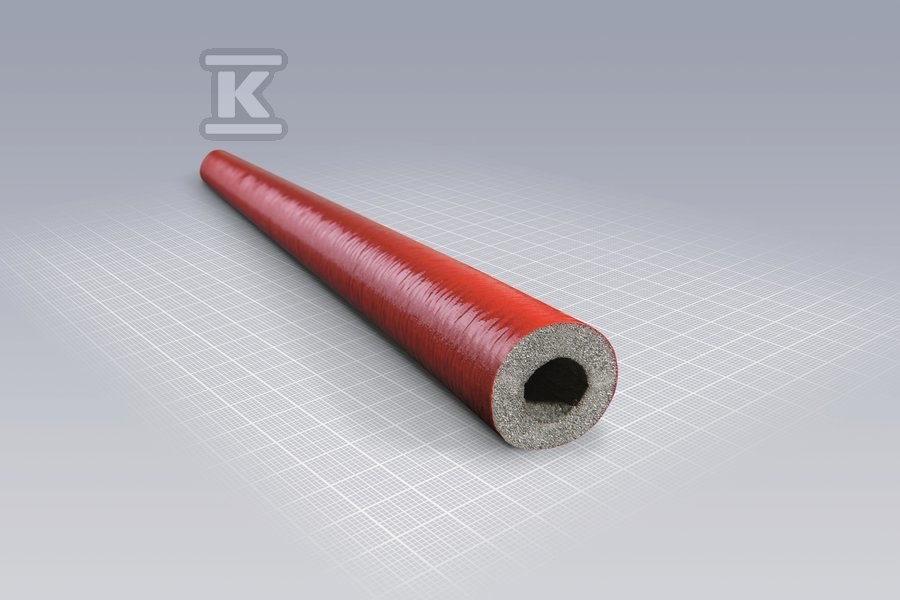In winter, low temperatures can damage water pipes in buildings. If water in pipes freezes, they can burst or even leak. Repairing such damage is often a big expense, so it is worth protecting pipes from frost. There are several proven methods for this. The most common are pipe insulation or heating cables. There are also other methods for preventing water from freezing in pipes. This article describes various methods for protecting pipes from frost.

Check pipe sleeves at the Onninen wholesaler
What are the consequences of not properly protecting plumbing systems against freezing?
First of all, the lack of proper protection of the plumbing system can be a threat to the residents of the building. When the pipes are damaged, it can also lead to many expensive repairs.
 When the temperature drops below 0°C, the water in the pipes freezes. When this happens, the ice inside the pipes expands, which can result in the pipe bursting. However, when the temperature rises significantly and the ice melts, the water can flood the building.
When the temperature drops below 0°C, the water in the pipes freezes. When this happens, the ice inside the pipes expands, which can result in the pipe bursting. However, when the temperature rises significantly and the ice melts, the water can flood the building.
The effects of freezing pipes are not limited to the previously mentioned failures of hydraulic system components. Other difficulties may also occur, such as delays in water supply.
Depending on the losses, such a repair can be very expensive. It is only necessary to replace damaged pipes, but often also to repair rooms damaged by water. In extreme cases, a complete replacement of the hydraulic system is required.
When is water pipe insulation necessary?
Water pipe insulation is a very important element of protecting the hydraulic system from freezing. The necessity of its use depends primarily on the location of the pipes and the climatic conditions prevailing in a given region.
 Pipes located outside buildings, in unheated rooms such as basements, garages or attics, as well as in places where pipes run through external walls, are particularly susceptible to water freezing.
Pipes located outside buildings, in unheated rooms such as basements, garages or attics, as well as in places where pipes run through external walls, are particularly susceptible to water freezing.
In such cases, thermal insulation of pipes is absolutely mandatory. It is also necessary to remember to insulate the cold water connection and pipes, as well as the pipes carrying hot water. Although these pipes are not directly exposed to freezing, they can lose temperature, which leads to large energy losses. On the other hand, the cold water connection is particularly susceptible to freezing because it is in constant contact with low outside temperatures.
Pipe installation insulation is also recommended in areas where pipes run through soils with a high freezing depth. These soils include sand or peat, which additionally increase the risk of freezing. Negative temperatures can be dangerous, so in some cases, additional protection may be to drain the water from the installation.
Insulation of water pipes with lagging
Water pipes are often protected with lagging. Lagging is a special thermal insulation that protects the pipes from direct contact with cold air. Thermal insulation is available in various types on the market, including:
-
 rubber casing ,
rubber casing , - covers made of polyurethane foam,
- polyethylene insulation .
Each of them, due to its specific properties, should be used in different types of buildings. For example, polyurethane insulation is characterized by high thermal properties, which effectively prevents heat loss.
The choice of the appropriate insulation depends mainly on the prevailing climatic conditions. For pipes installed at low temperatures, insulations with a large thickness and low thermal conductivity coefficient work best.
The installation of the insulation is relatively simple and can be safely carried out without hiring specialists. However, it is important to carefully secure the pipes, especially their bends and joints, because it is in these places that heat loss most often occurs.
Proper protection of water installations with heating cables
Water installations can be protected using various methods. Another proven way to protect pipes from freezing is to use heating cables. Cables are divided into: internal heating cables and external heating cables . Both types are devices that emit heat, heating the pipes and thus preventing the water inside from freezing. Heating cables are particularly useful in places where thermal insulation may be insufficient.
There are different types of heating cables, e.g. constant temperature cables or self-regulating cables that adjust the heating power to the current room temperature.
 It is important that the installation of heating cables requires connection to the power supply and connection to a thermostat. The thermostat's task is to control the temperature by automatically turning the heating on or off. This allows you to effectively protect the pipes from freezing and minimize the consumption of electricity, adapting it to the optimal conditions of the building.
It is important that the installation of heating cables requires connection to the power supply and connection to a thermostat. The thermostat's task is to control the temperature by automatically turning the heating on or off. This allows you to effectively protect the pipes from freezing and minimize the consumption of electricity, adapting it to the optimal conditions of the building.
Protecting the hydraulic system from freezing is primarily a matter of safety. The choice of the appropriate protection method, i.e. pipe insulation with lagging or the use of heating cables, depends on individual factors, e.g. the location of the installation.
It is worth investing in proven solutions to protect your building from costly repairs and problems related to frozen pipes in winter.
Below are some recommended products to protect your plumbing system.
- Armacell Tubolit DG grey polyethylene casing TL-48/30-DG /2m/ , which is used, among others, in the insulation or protection of heating pipes.
- Devi self-regulating heating cable DEVIpipeguard / 230V 10W 98300700 , which ensures fast and uniform heating of pipelines.
- Armaflex sleeve adhesive 500ml ADH520/0.5E used for both rubber and polyethylene sleeves.
Each plumbing installation requires the selection of appropriate materials and safety techniques. It is important that they are adapted to the specific conditions of the building. This allows you to enjoy trouble-free operation of the plumbing installation all year round, regardless of the outside temperatures.